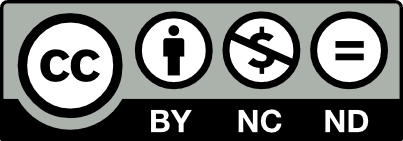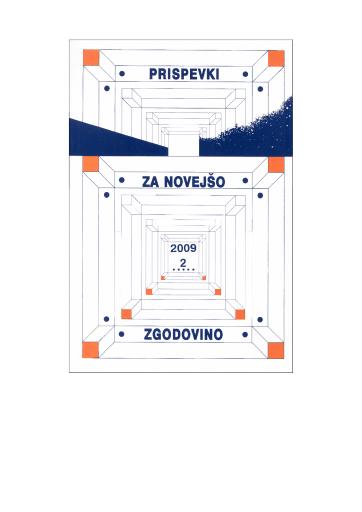/
Periodicals
/
Prispevki za novejšo zgodovino
Consumption in the Time of the Great Depression in Light of Slovene Contemporary Press

Author(s):Marta Rendla
Co-author(s):Zdenko Čepič (gl. ur.), Damijan Guštin (gl. ur.), Borut Praper (prev.)
Year:2009
Publisher(s):Inštitut za novejšo zgodovino, Ljubljana
Language(s):slovenščina
Type(s) of material:text
Keywords:gospodarska kriza, potrošnja, Evropa, Jugoslavija, Dravska banovina, consumption, Great Depression, Europe, world, Drava Banate
Rights:

This work by Marta Rendla is licensed under Creative Commons Attribution-NonCommercial-NoDerivs 4.0 International
Files (1)

Name:Prispevki_za_novejso_zgodovino_2009-2.pdf
Size:50.63MB
Format:application/pdf
Permanent link:https://hdl.handle.net/11686/file698
Description
In the following article the author will demonstrate the state of consumption in Europe,
the world and in Yugoslavia or the Drava Banate in the time of the Great Depression, on the
basis of reports published in expert and major daily press and by means of what were at the
time immediate indicators of consumption - especially volume of trade and production as
well as trade in representative goods at global markets - and partly on the basis of few
consumption reports. Continuous recession was characteristic of consumption in this period.
In the - Europe, struggling with shortage and crisis of consumption and the agrarian sector
ever since the end of World War I, thus even since before the onset of the Great Depression -
the phenomenon of the Great Depression even worsened what had already been a difficult
economic position.
In 1932 partial tendencies of economic activity revitalisation due to the balancing of the
disproportion between supply and demand for certain kinds of goods became evident, while
the year 1933 represented the turning point. At that time the level of trade and.
consequently, consumption reached the lowest point globally, therefore the trends reversed
and pointed upwards. The turning point in Yugoslavia occurred later, in 1934, when the
bottom of the crisis was reached.
Metadata (12)
- identifierhttps://hdl.handle.net/11686/15338
- title
- Potrošnja v času velike gospodarske krize v luči takratnega slovenskega časopisja
- Consumption in the Time of the Great Depression in Light of Slovene Contemporary Press
- creator
- Marta Rendla
- contributor
- Zdenko Čepič (gl. ur.)
- Damijan Guštin (gl. ur.)
- Borut Praper (prev.)
- subject
- gospodarska kriza
- potrošnja
- Evropa
- Jugoslavija
- Dravska banovina
- consumption
- Great Depression
- Europe
- world
- Drava Banate
- description
- V prispevku avtorica prikaže položaj potrošnje v Evropi in svetu ter v Jugoslaviji oziroma Dravski banovini v času velike gospodarske krize, in to na podlagi poročil strokovnega in osrednjega dnevnega časopisja in z uporabo takrat neposrednih kazalnikov stanja porabe, kot so predvsem obseg trgovine in proizvodnje, trgovanje z reprezentančnim blagom na svetovnih blagovnih trgih in redka poročila o porabi. Značilno za potrošnjo v tem obdobju je bilo nenehno nazadovanje; v Evropi, ki se je ves čas po prvi svetovni vojni, torej že pred samim izbruhom velike gospodarske krize, spopadala s pomanjkanjem in krizo v potrošnji in agrarnem sektorju, pa je pojav velike gospodarske krize že sicer težak gospodarski položaj še poslabšal. Delna oživitev gospodarske aktivnosti se je začela zaradi usklajevanja nesorazmerja med ponudbo in povpraševanjem pri posameznih vrstah blaga kazati leta 1932, prelomnico pa je pomenilo leto 1933. Obseg trgovine in posledično poraba sta takrat v svetu dosegla najnižjo točko, zato so se gibanja obrnila navzgor; v Jugoslaviji pa se je obrat zgodil pozneje, leta 1934, ko je kriza dosegla dno.
- In the following article the author will demonstrate the state of consumption in Europe, the world and in Yugoslavia or the Drava Banate in the time of the Great Depression, on the basis of reports published in expert and major daily press and by means of what were at the time immediate indicators of consumption - especially volume of trade and production as well as trade in representative goods at global markets - and partly on the basis of few consumption reports. Continuous recession was characteristic of consumption in this period. In the - Europe, struggling with shortage and crisis of consumption and the agrarian sector ever since the end of World War I, thus even since before the onset of the Great Depression - the phenomenon of the Great Depression even worsened what had already been a difficult economic position. In 1932 partial tendencies of economic activity revitalisation due to the balancing of the disproportion between supply and demand for certain kinds of goods became evident, while the year 1933 represented the turning point. At that time the level of trade and. consequently, consumption reached the lowest point globally, therefore the trends reversed and pointed upwards. The turning point in Yugoslavia occurred later, in 1934, when the bottom of the crisis was reached.
- publisher
- Inštitut za novejšo zgodovino
- date
- 2009
- type
- besedilo
- language
- Slovenščina
- isPartOf
- rights
- license: ccByNcNd
Citirano v (1)
| Tipologija | Avtor(ji) | Naslov | Kraj | Založba | Leto |
|---|---|---|---|---|---|
| 2.01 Znanstvena monografija | Počivavšek, Marija | En gros & en detail : trgovina v Sloveniji do druge svetovne vojne : trendi, strukture, prakse | Celje | Zgodovinsko društvo | 2012 |
Seznam literature v delu (13)
| Stran | Avtor | Naslov | Vir | Kraj | Založba | Leto |
|---|---|---|---|---|---|---|
| 54 | Borak, Neven | Uvod v krize in gospodarske cikluse: gospodarske krize in Slovenci | Ljubljana | 1999 | ||
| 55 | Kilar, Dejan | Kaj je recesija in kaj depresija? | http://www.asista-skupina.si/index.php?t=news&id=63 | |||
| 55 | Norčič, Oto | Krize in slovensko gospodarstvo | Gospodarske krize in Slovenci | Ljubljana | 1999 | |
| 56 | Berend, T. | Decades of crisis: Central and Eastern Europe before World War 2 | Berkley - LA - London | 1998 | ||
| 57 | Kaiser, I. | Evropske gospodarske krize | Trgovski tovariš | 1929 | ||
| 57 | Lazarević, Žarko | Videnji ekonomske svobode posameznika med veliko gospodarsko krizo dvajsetih let | Gospodarske krize in Slovenci | Ljubljana | 1999 | |
| 57 | Počivavšek, Marija | Vpliv velike gospodarske krize na razvoj trgovine | Prispevki za novejšo zgodovino | 2006 | ||
| 57 | Nećak, Dušan ; Repe, Božo | Kriza: svet in slovenci od konca prve svetovne vojne do srede tridesetih let | Ljubljana | 2008 | ||
| 58 | Lazarević, Žarko | Velika gospodarska kriza | Slovenska novejša zgodovina : od programa Zedinjena Slovenija do mednarodnega priznanja Republike Slovenije 1848-1992 | Ljubljana | 2005 | |
| 58 | Kresal, France | Zgodovina socialne in gospodarske politike v Sloveniji | Ljubljana | 1998 | ||
| 58 | Kresal, France | Gospodarska kriza 1929-1933 | Gospodarske ktize in Slovenci | Ljubljana | 1999 | |
| 59 | Lah, Ivo | Grafologija našega narodnega gospodarstva | Trgovski tovariš | 1931 | ||
| 59 | Kaiser, I. | Evropske gospodarske krize | Trgovski tovariš | 1929 |
